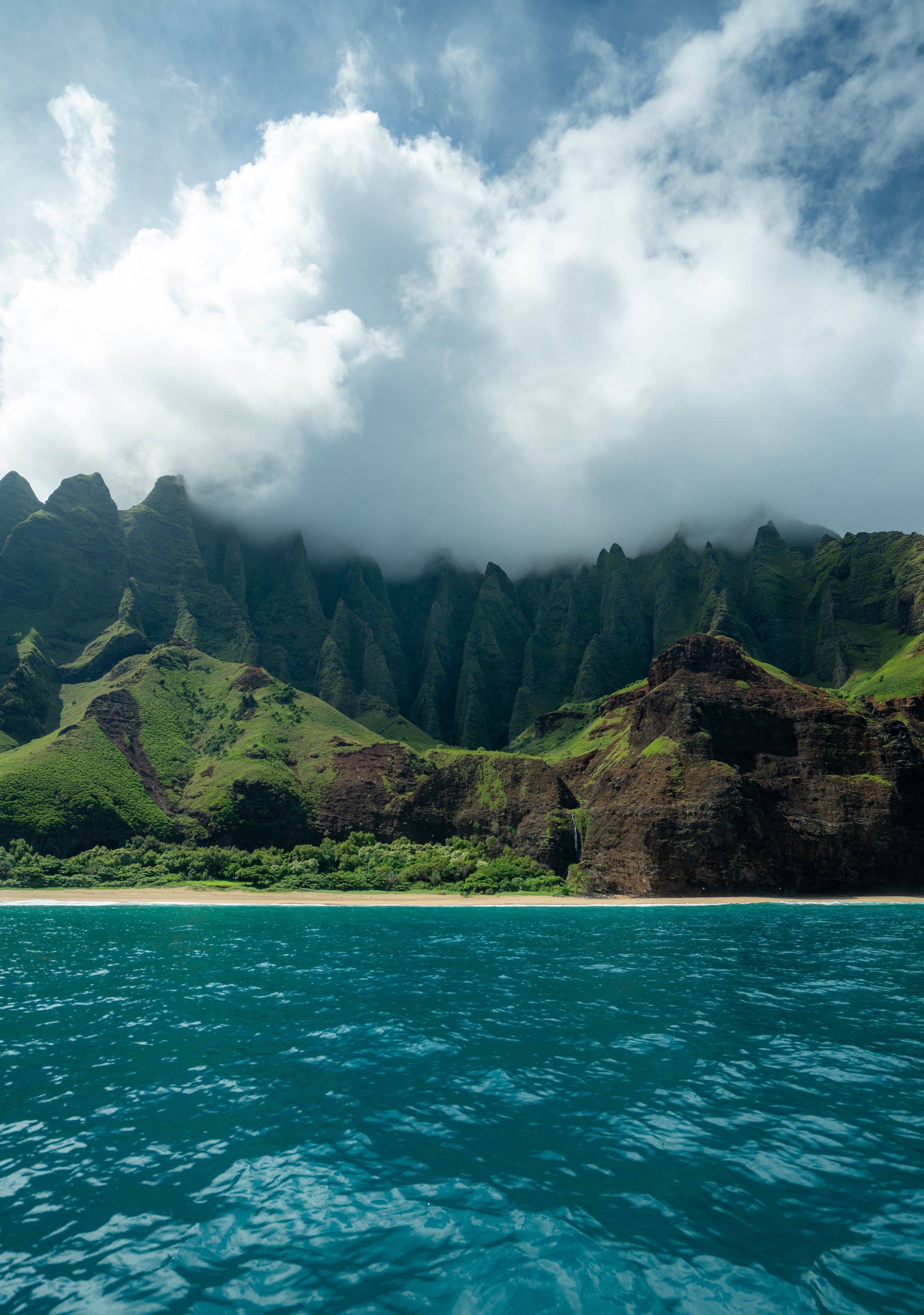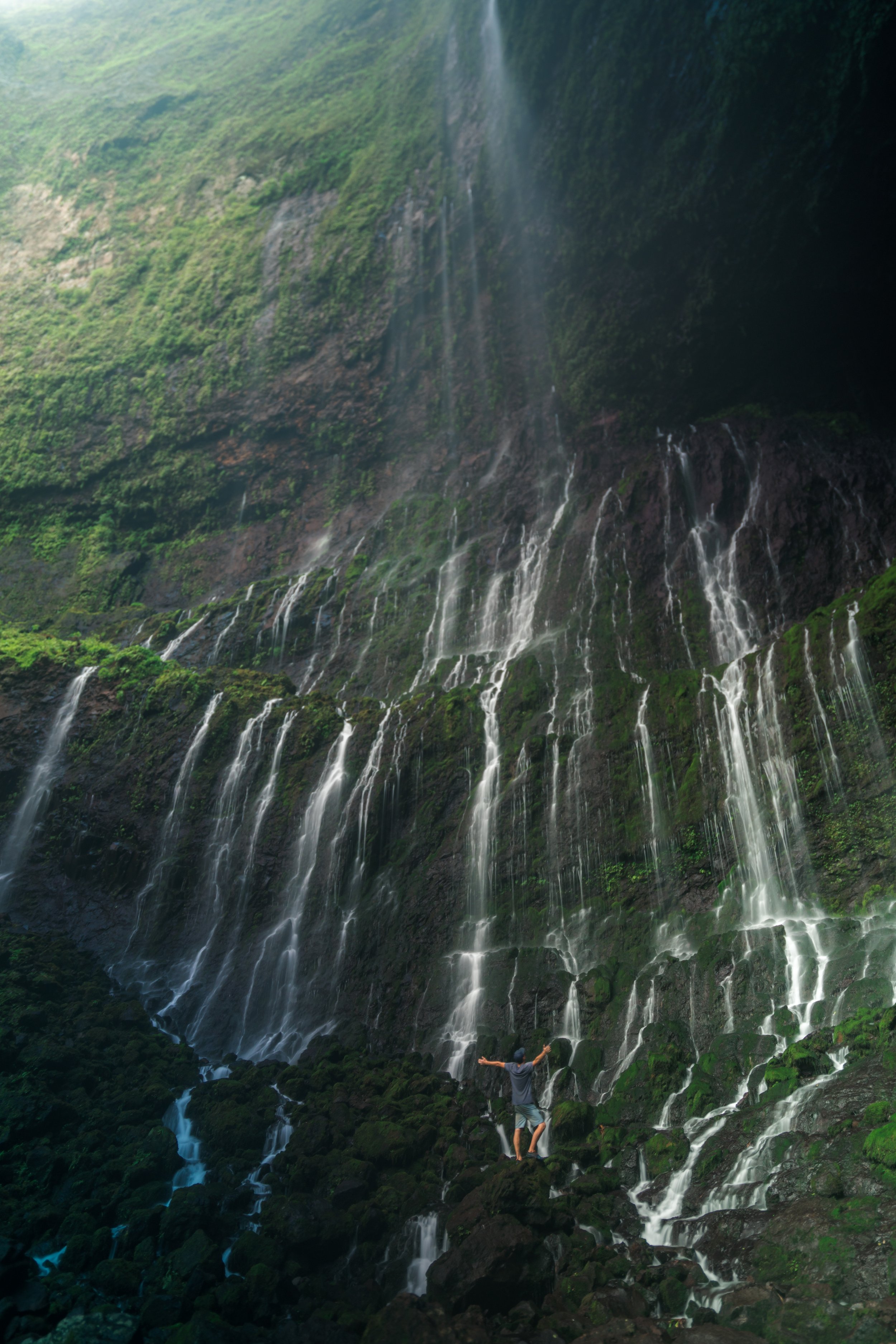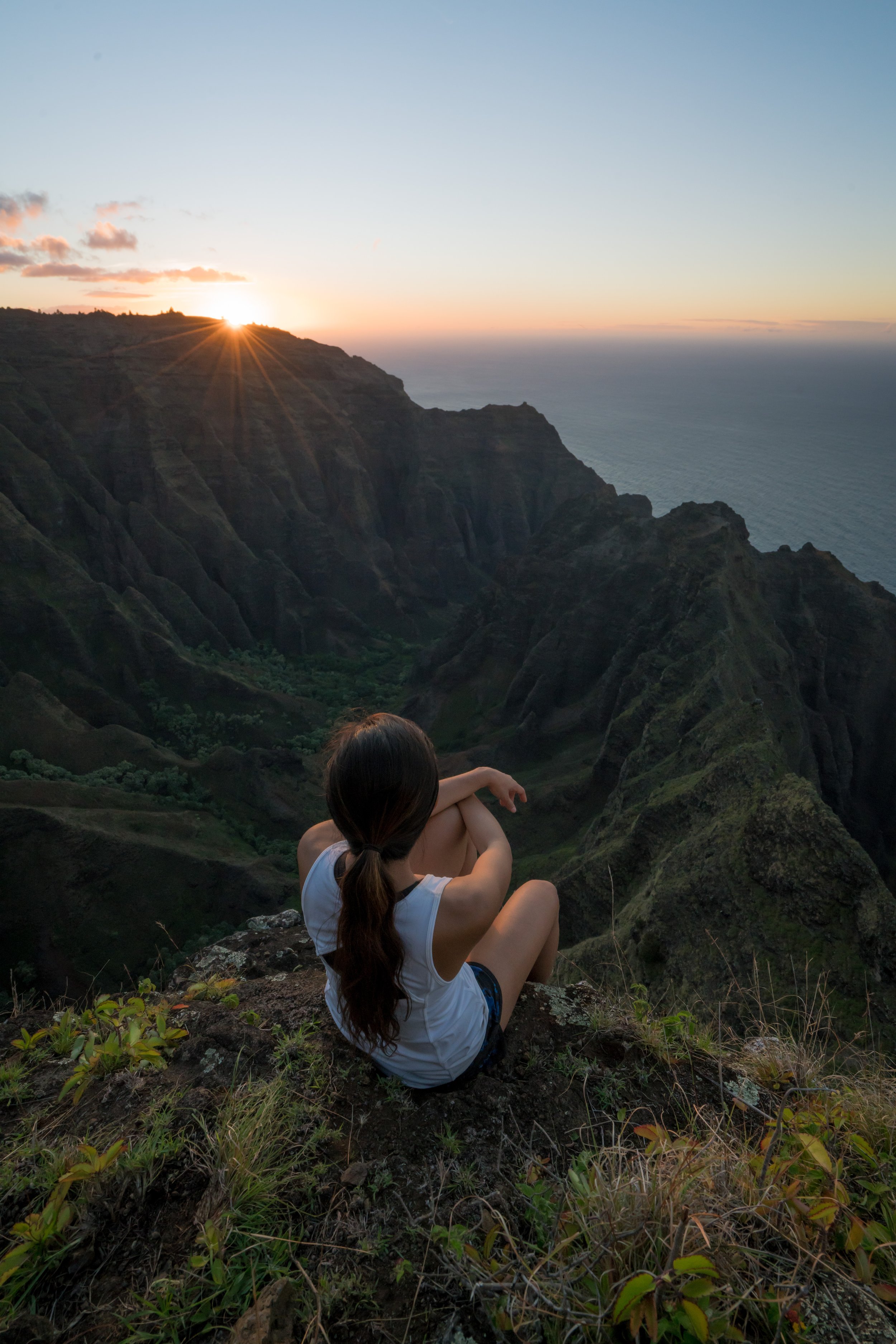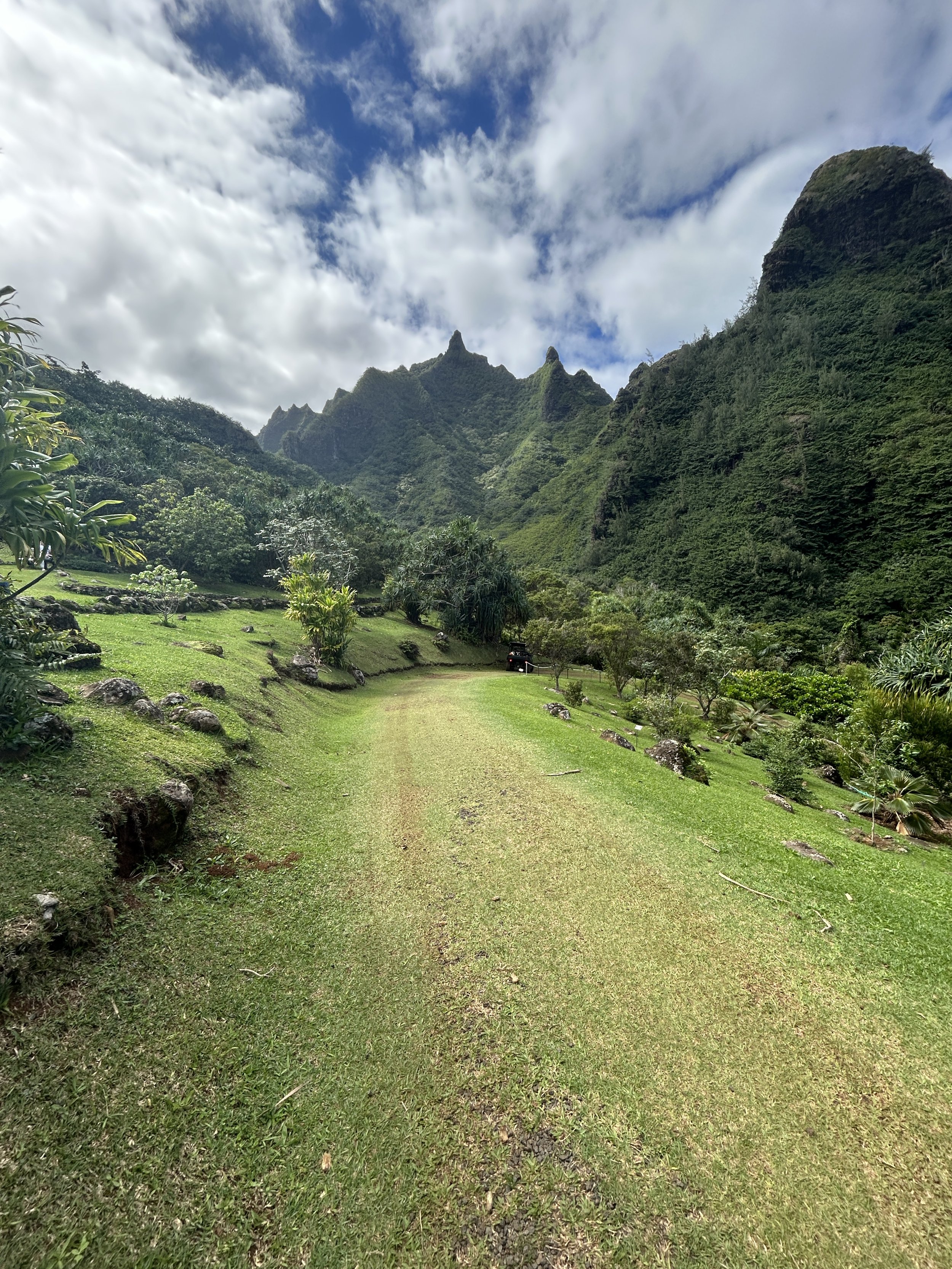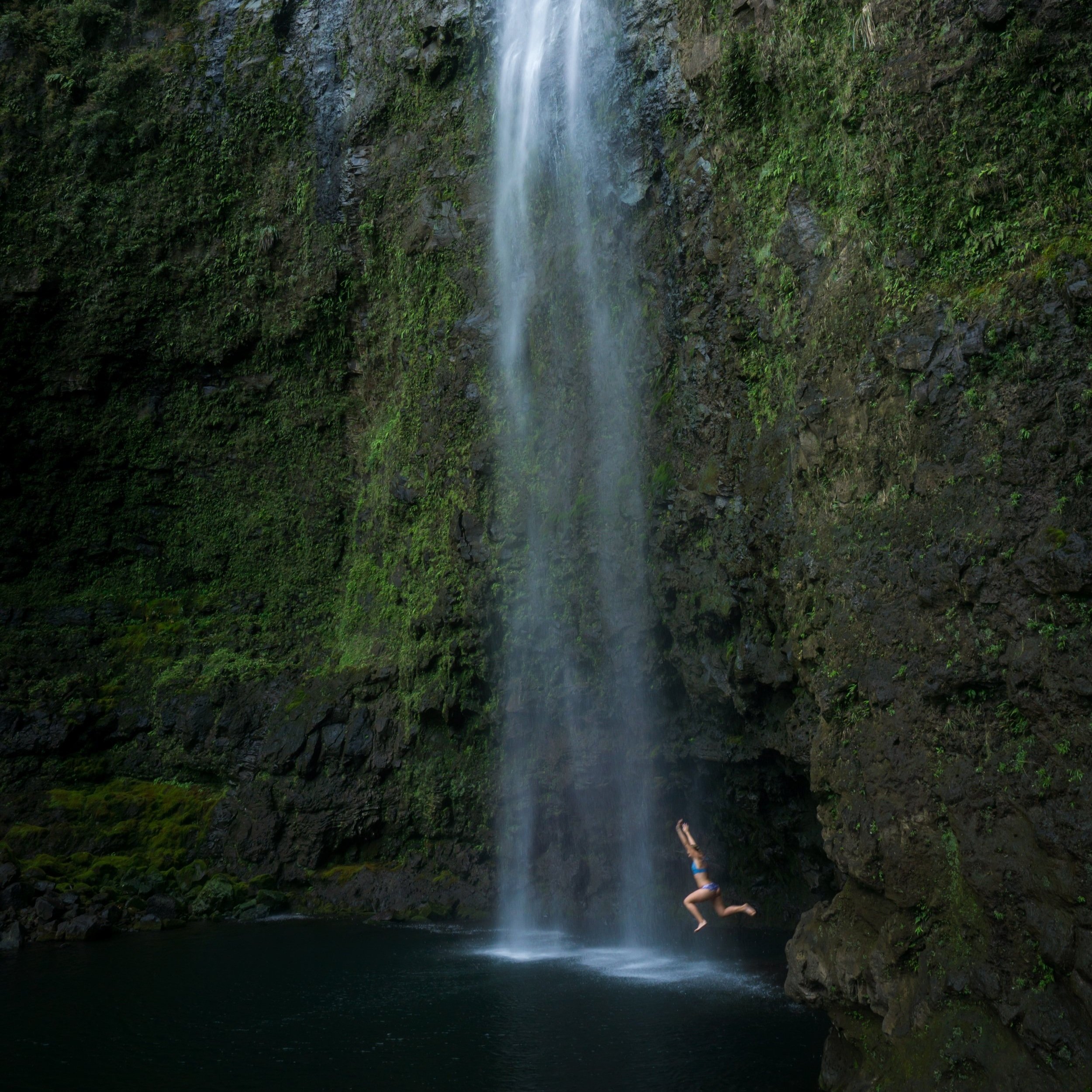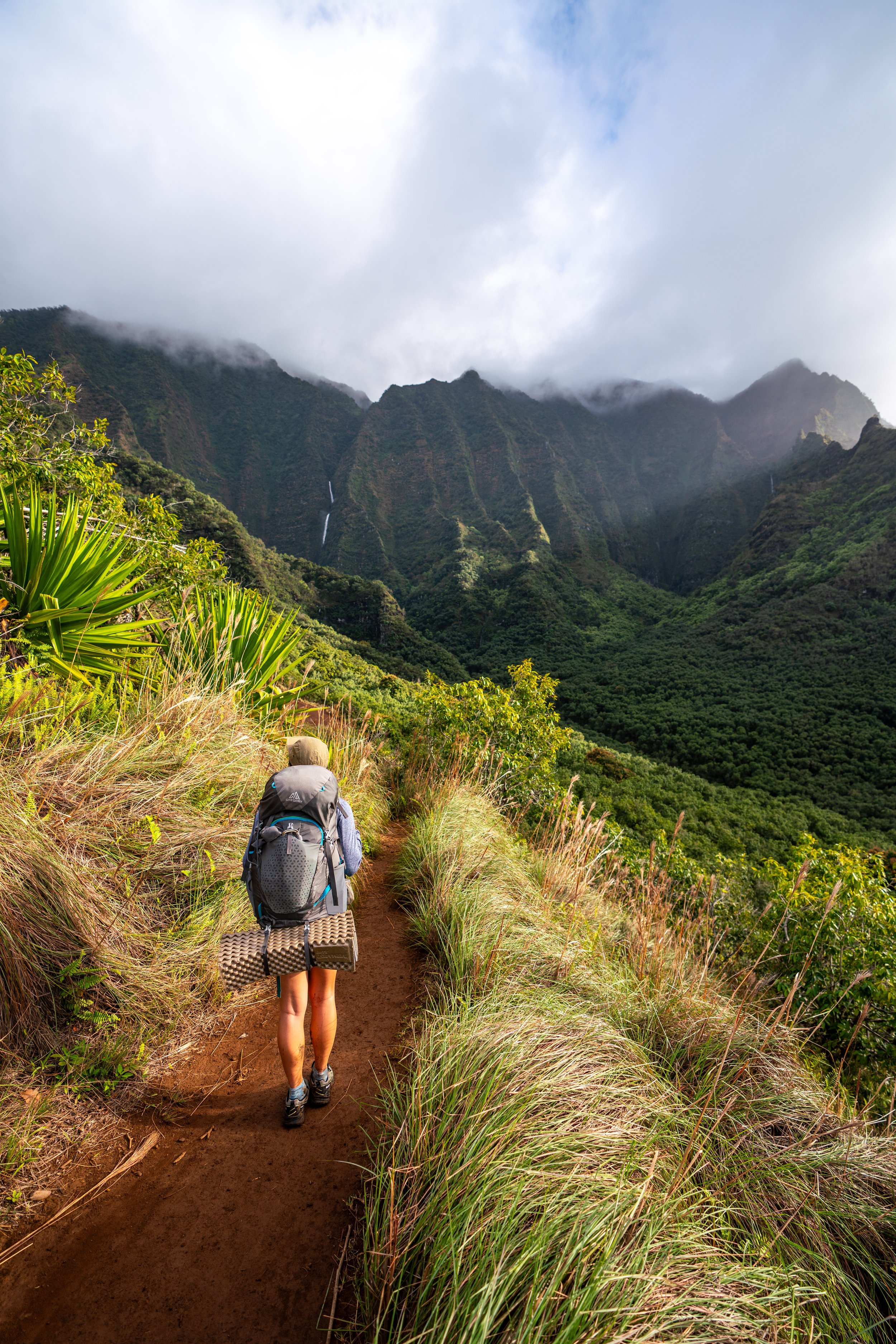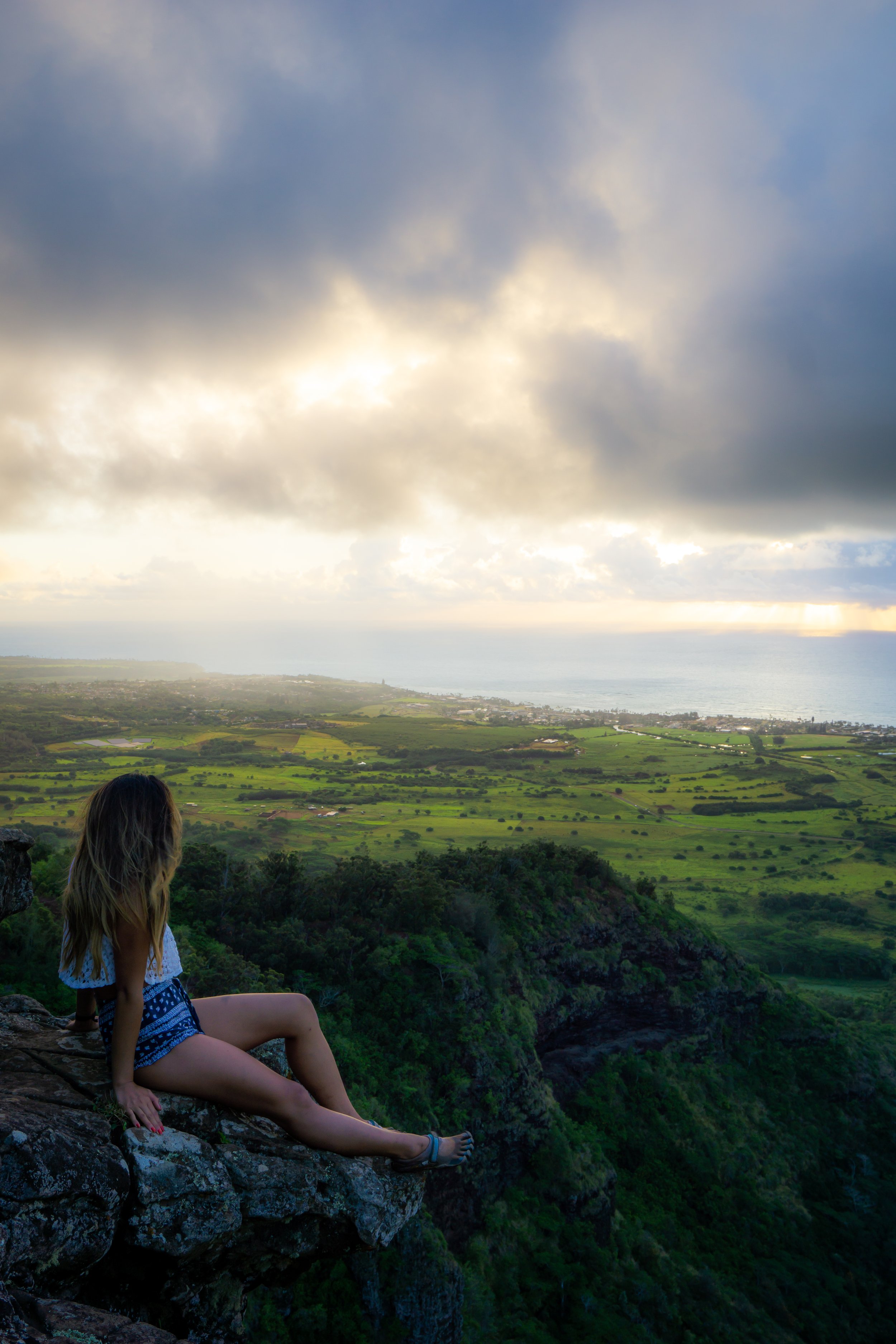Hiking the Kukui Trail to the Lonomea Shelter on Kauaʻi, Hawaiʻi
Distance (Roundtrip): 12.2 miles / 19.6 km
Elevation Change (Trailhead to Waimea River): -2,210 ft. / 674 m
Elevation Change (Waimea River to Lonomea) +810 ft. / 247 m
The Kukui Trail to Lonomea on Kauaʻi is a beautiful overnight backcountry adventure in the heart of the Waimea Canyon that I often consider to be one of my favorite backpacking trips across all of Hawaiʻi!
I say this not only because Lonomea is one of the most beautiful places to camp within Waimea Canyon, but also because there is only one permit available for the Lonomea Shelter—meaning your group will be the only one there for as long as you hold the permit. This is something that cannot be said about the Kalalau Trail (Nāpali Coast).
All this to say, I personally recommend spending at least two nights at the Lonomea Shelter to fully enjoy the waterfall, as well as everything there is to see and do at the bottom of the canyon!
How to Get Lonomea Permits?
Lonomea permits can only be purchased up to 90 days in advance, and being that there is only one available permit per night, it’s best to get the reservation right when they are released—especially over any holiday or weekend.
Note that only the first date of your trip needs to be at least 90 days out, meaning 91 days and beyond can be reserved on the same permit, so long as the dates are consecutive.
Book Here: Lonomea Permits
Iliau Loop-Kukui Trailhead Parking
Parking for the Kukui Trail to the Lonomea Shelter is located on the side of Kōkeʻe Road at the shared trailhead for both the Iliau Nature Loop and the Kukui Trail.
Out of caution, consider the Iliau Loop-Kukui Trailhead to be a high-crime area for petty theft, meaning you should never leave visible bags or anything valuable in your car.
Google Maps Directions: Kukui Trailhead
My Hawaiʻi Hiking Checklist
Obviously, for camping, you will need general backpacking gear. For this reason, I wrote a separate post about what backpacking gear is worth the money, from my experience, and what the best alternatives are to save you money.
Read My Separate Post: Best Ultralight Backpacking Gear
In addition, here is a complete list of must-have things that you will want for any hike on Kauaʻi.
Hiking the Kukui Trail to Lonomea
The Kukui Trail begins at the same trailhead as the Iliau Nature Loop, located right along the rim of the Waimea Canyon.
Iliau Nature Loop
Then, once at the split for the Iliau Nature Loop, go right to stay on the fastest path.
Kukui (Lonomea)-Iliau Nature Loop Junction
At the next split at roughly 0.1 miles (0.2 km) into the trail, go right, which is the start of the Kukui Trail that begins the descent into the Waimea Canyon.
Read My Separate Post: Iliau Nature Loop Trail
From the top, the Kukui Trail descends roughly 2,210 ft. (674 m) in just 2.6 miles (4.2 km) down a series of switchbacks and hills to the Waimea River. For this reason, you may want to consider bringing trekking poles, such as the ones below, for this steep descent.
Once at the bottom of the canyon, which is also the lowest point of the hike, you will be at Wiliwili Camp—named for the surrounding native Wiliwili forest that you just hiked through to get to that point.
Wiliwili Camp to Koaiʻe Canyon Trail
From Wiliwili Camp, the trail follows the Waimea River for about 0.8 miles (1.3 km) along a dirt path/ road up river toward Kaluahāʻulu Camp.
The trail will cross the river three times before turning up the Koaiʻe Canyon Trail, which should be marked with a sign.
Koaiʻe Canyon Trail
The final stretch of the hike to the Lonomea Shelter is the 2.6-mile (4.2 km) Koaiʻe Canyon Trail, and once on the trail, there are no more turns or stream crossings for the rest of the hike.
About 0.6 miles (1.0 km) up Koaiʻe Canyon, the trail passes by Hipalau; the final camping shelter before Lonomea.
That being said, it should become obvious why Lonomea is worth hiking the longest distance past all of the other campsites to get there. In my opinion, it’s better in every way compared to all of the other campsites, largely because of the beautiful river access and swimming that you can do right from the shelter.
Lonomea Shelter
The end of the Koaiʻe Canyon Trail is the Lonomea Shelter, and as you can see from the photo below, our tent fit perfectly underneath the shelter.
However, this is without saying that the mosquitoes in the Waimea Canyon were some of the worst I’ve experienced in Hawaiʻi, but typically speaking, they were only bad in the evening.
During the morning or midday, they were never a problem, and when we went to the stream in the evening, they were never an issue.
Still, whenever we would need to do something around the camp, such as cook in the evening, they were pretty unbearable, which is why I recommend packing this cheap bug net before visiting.
Koaiʻe Stream
One of the best things that makes Lonomea so special is the beautiful waterfall and swimming hole in the Koaiʻe Stream just outside of the campsite.
That being said, we didn’t bring tubes that you can see in the photos here, but rather, they were left by other hikers, which made for a pretty fun time!
Personally, I wanted to jump in from the rock to the left of the falls, but on account of the water being so incredibly cold, I never checked the depth to see if it was safe.
If you know either way, please leave a comment below.
Lonomea Shelter Day Hiking
Before the trip, I had planned to do a lot of exploring from our campsite. However, after hiking up the Koaiʻe Canyon, I quickly learned just how far away Lonomea is from everything else within the Waimea Canyon.
If you did want to hike further up the Waimea River, which was my initial plan, booking Kaluahāʻulu Shelter would make the most sense.
Regardless, since it didn’t seem like there were any close waterfalls upstream of the Lonomea Shelter, we chose to day hike up Kawai ʻiki Valley/ Stream to Banana Falls.
Kawai ʻiki Valley
From the shelter, the start of Kawai ʻiki Valley is only 0.25 miles (0.4 km) back down the Koaiʻe Canyon Trail, with a total distance of 1.0 mile (1.6 km) each way to Banana Falls. This distance is not included in the roundtrip distance at the beginning of this article.
As for Kawai ʻiki Valley, there is not a trail up the canyon, but we simply retraced the Koaiʻe Canyon Trail until we met the last stream that we crossed before Lonomea. This is the Kawai ʻiki Stream.
From here, we followed the Kawai ʻiki Stream the best we could, all the way to Banana Falls.
Banana Falls
Banana Falls is spring-fed from a spring located just above the falls, and I found this out upon climbing to the top of falls to see if there was potential to find the bigger Kawai ʻiki Falls at the back of the canyon. However, the stream stopped abruptly after the spring, which tells me that Kawai ʻiki Falls will likely only be flowing after it has recently rained.
That being said, the narrow Kawai ʻiki Canyon has huge potential to flash flood, which is why I would never advise the hike during periods of wet weather.
In any case, Banana Falls is a much 'safer' place to visit, and it will be flowing year-round on account of the spring, Additionally, we also found about 20 lilikoi and a full rack of bananas up Kawai ʻiki Valley; hence, the name Banana Falls!
Native Plants on the Kukui & Koaiʻe Canyon Trail
The bottom of the Kukui Trail to the Lonomea Shelter is one of the best trails on Kauaʻi to find tons of Wiliwili trees growing in their native habitat. This is the last fourth of the Kukui Trail to the bottom of the Waimea Canyon and all the way to Lonomea, where Wiliwili trees can be found in high numbers!
Furthermore, other native plants that can be found on the hike include the Lonomea, ʻIlieʻe, Alaheʻe, Māmaki, Kāwelu, and Iliau, to truly only name a few.
If you are curious about trying the native Hawaiian Māmaki tea, I kindly ask that you don’t harvest Māmaki from our native forests but, instead, buy from one of the local reputable vendors, such as those listed below.
All in all, if you’re interested in learning more about these and tons of other native Hawaiian plants from across the islands, I encourage you to read more in my separate post linked below.
Read My Separate Post: Native Hawaiian Plant Guide



